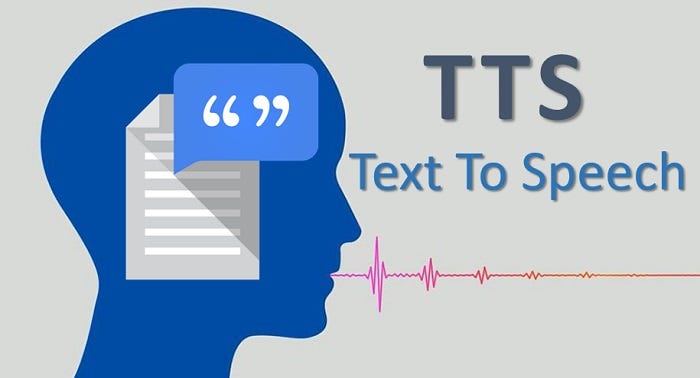
Text to speech
Created on 18 September, 2025 • Text tools • 92 views • 4 minutes read
The Complete Guide to Converting Text into Natural Voice
Text to Speech: The Complete Guide to Converting Text into Natural Voice
Introduction to Text to Speech
In the age of digital content and accessibility, Text to Speech (TTS) technology has become an essential tool for individuals, businesses, educators, and developers. Text to Speech allows written text to be converted into spoken audio, enabling content to be listened to rather than read.
Whether for accessibility purposes, audiobook creation, voice assistants, or online tutorials, Text to Speech enhances user experience and broadens the reach of digital content.
What is Text to Speech (TTS)?
Definition
Text to Speech (TTS) is a speech synthesis technology that converts written text into spoken words using software and AI-generated voices. Modern TTS systems can mimic human speech, offering different languages, accents, and voice styles.
Importance
- Provides accessibility for visually impaired users.
- Enhances learning and comprehension by enabling auditory content consumption.
- Saves time by listening to content instead of reading.
- Supports voice-enabled applications, including AI assistants and automated call systems.
How Text to Speech Works
Step 1: Input Text
Users enter the text they want to convert into speech, either by typing, pasting, or uploading documents.
Step 2: Select Voice and Language
Most TTS tools allow users to choose from multiple voices, genders, and languages to make the audio output natural and engaging.
Step 3: Convert Text into Speech
The TTS engine analyzes the text for:
- Pronunciation rules
- Punctuation and sentence structure
- Emphasis and intonation patterns
It then generates a natural-sounding audio output.
Step 4: Preview and Adjust
Users can listen to a preview, adjust speed, pitch, or volume, and fine-tune pronunciation for better clarity.
Step 5: Export or Use Audio
The final audio can be:
- Downloaded as MP3, WAV, or other formats
- Integrated into apps, websites, or e-learning platforms
- Played directly for reading content aloud
Features of Text to Speech
Multiple Voices
Provides different voice options, including male, female, and regional accents.
Multi-Language Support
Supports various languages to reach a global audience.
Speed and Pitch Control
Adjusts the rate of speech and pitch to match the desired listening experience.
Cloud-Based and Offline TTS
Offers both online services and offline software solutions.
Document and Web Page Conversion
Converts text from Word, PDF, TXT, or web pages into audio automatically.
Accessibility Features
Enhances usability for people with visual impairments or reading difficulties.
Benefits of Using Text to Speech
Accessibility
Makes digital content accessible to people with visual impairments, dyslexia, or other reading challenges.
Enhanced Learning
Supports auditory learning, helping students or professionals retain information better.
Productivity
Allows multitasking by listening to articles, reports, or emails while performing other tasks.
Content Repurposing
Transforms written content into audio formats for podcasts, audiobooks, or voice-enabled apps.
Multilingual Support
Reaches audiences who prefer listening in different languages or dialects.
User Engagement
Engaging audio content increases user retention, especially on websites, e-learning platforms, and apps.
Common Use Cases for Text to Speech
Accessibility Tools
Assist visually impaired users or those with reading difficulties by reading web pages, eBooks, or documents aloud.
Audiobooks and Podcasts
Convert written books, articles, or scripts into high-quality audio content.
E-Learning Platforms
Enhance online courses by providing narrated lessons, instructions, and quizzes.
Voice Assistants
Power AI-driven assistants like Siri, Alexa, Google Assistant, and chatbots with natural-sounding speech.
Customer Support Automation
Provide automated voice responses in call centers or interactive voice response (IVR) systems.
Content Marketing
Repurpose blogs, articles, and social media content into audio formats for wider reach.
Popular Text to Speech Tools
Online Tools
- NaturalReader: Offers realistic voices and cloud-based TTS services.
- Google Text-to-Speech: Powerful online and Android-based TTS solution.
- TTSMP3.com: Simple tool for converting text to downloadable audio files.
Desktop Software
- Balabolka: Free Windows-based TTS software with multiple voice options.
- Voice Dream Reader: Mobile and desktop app for reading documents aloud.
- Read Aloud: Extension for browsers to read web pages in natural voices.
AI-Based Solutions
Modern AI-powered TTS tools generate highly natural human-like voices using neural networks:
- Amazon Polly
- Microsoft Azure Text to Speech
- IBM Watson Text to Speech
Best Practices for Using Text to Speech
- Choose Natural Voices: Use AI-powered voices for better engagement.
- Adjust Speed and Pitch: Ensure the speech is clear and understandable.
- Check Pronunciation: Review complex words, acronyms, or names.
- Use TTS for Accessibility: Make content inclusive for all users.
- Integrate with Platforms: Embed TTS in e-learning, websites, and apps for seamless experience.
- Combine with Subtitles: Provide visual support for listeners who may need it.
How Text to Speech Supports Digital Marketing and Content Creation
Repurpose Written Content
Transform blog posts, articles, and newsletters into audio formats for podcasts and audio platforms.
Increase User Engagement
Offering audio content keeps users on websites longer and caters to those who prefer listening over reading.
Expand Audience Reach
Reach visually impaired users and global audiences by providing multilingual TTS options.
Improve Learning Platforms
Provide auditory learning for students, increasing knowledge retention and accessibility.
Voice Search and AI Integration
Integrate TTS with voice search features and AI assistants for modern interactive applications.
Conclusion
Text to Speech (TTS) technology is a transformative tool that converts written text into natural-sounding speech, enhancing accessibility, engagement, and productivity.
By using Text to Speech, content creators, educators, businesses, and developers can repurpose content, reach wider audiences, improve learning experiences, and provide inclusive digital solutions. Regular use of TTS tools ensures that content is audible, accessible, and professionally presented, adapting to the needs of modern users in a digital-first world.
Popular posts
-
Random number generatorGenerator tools • 133 views
-
Emojis removerText tools • 129 views
-
Lorem Ipsum generatorGenerator tools • 129 views
-
Reverse lettersText tools • 121 views
-
Old English text generatorText tools • 121 views